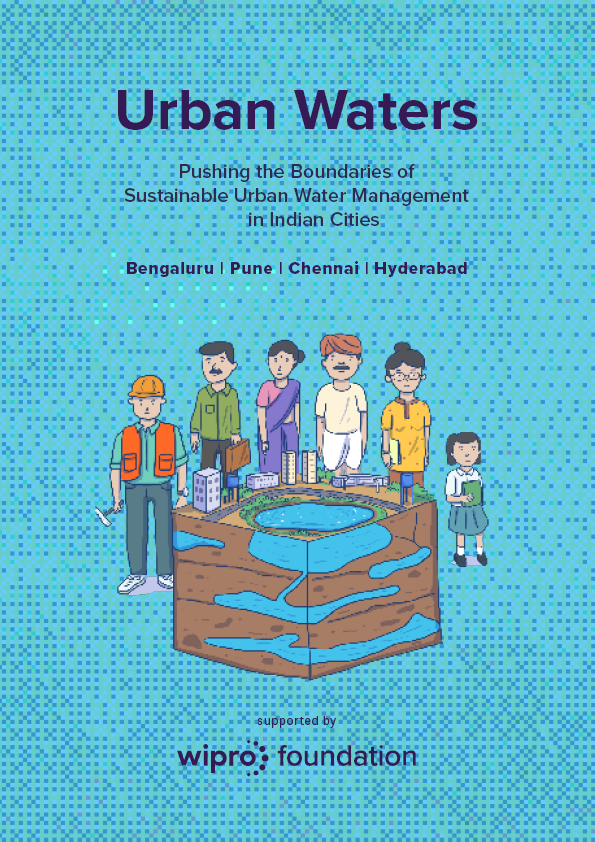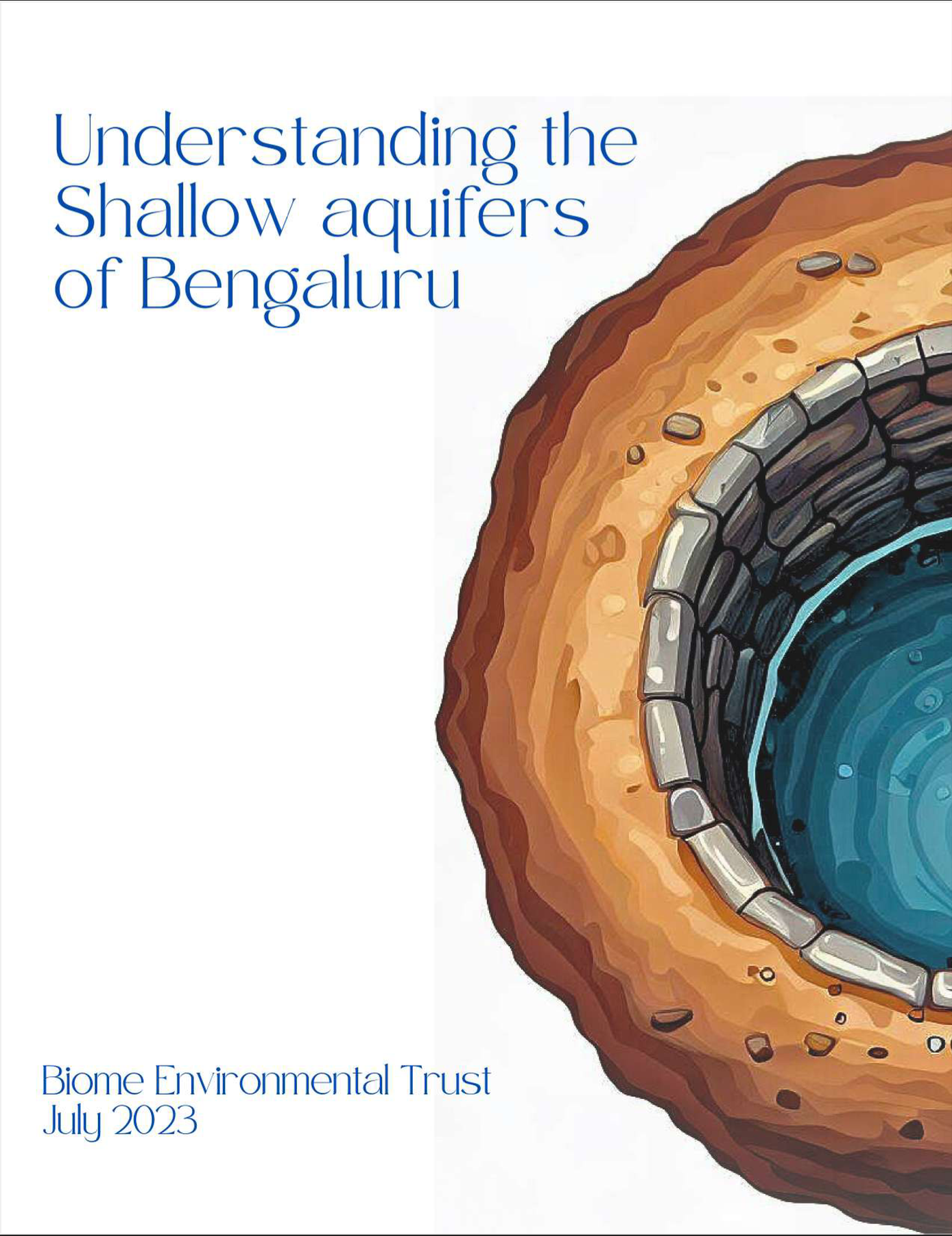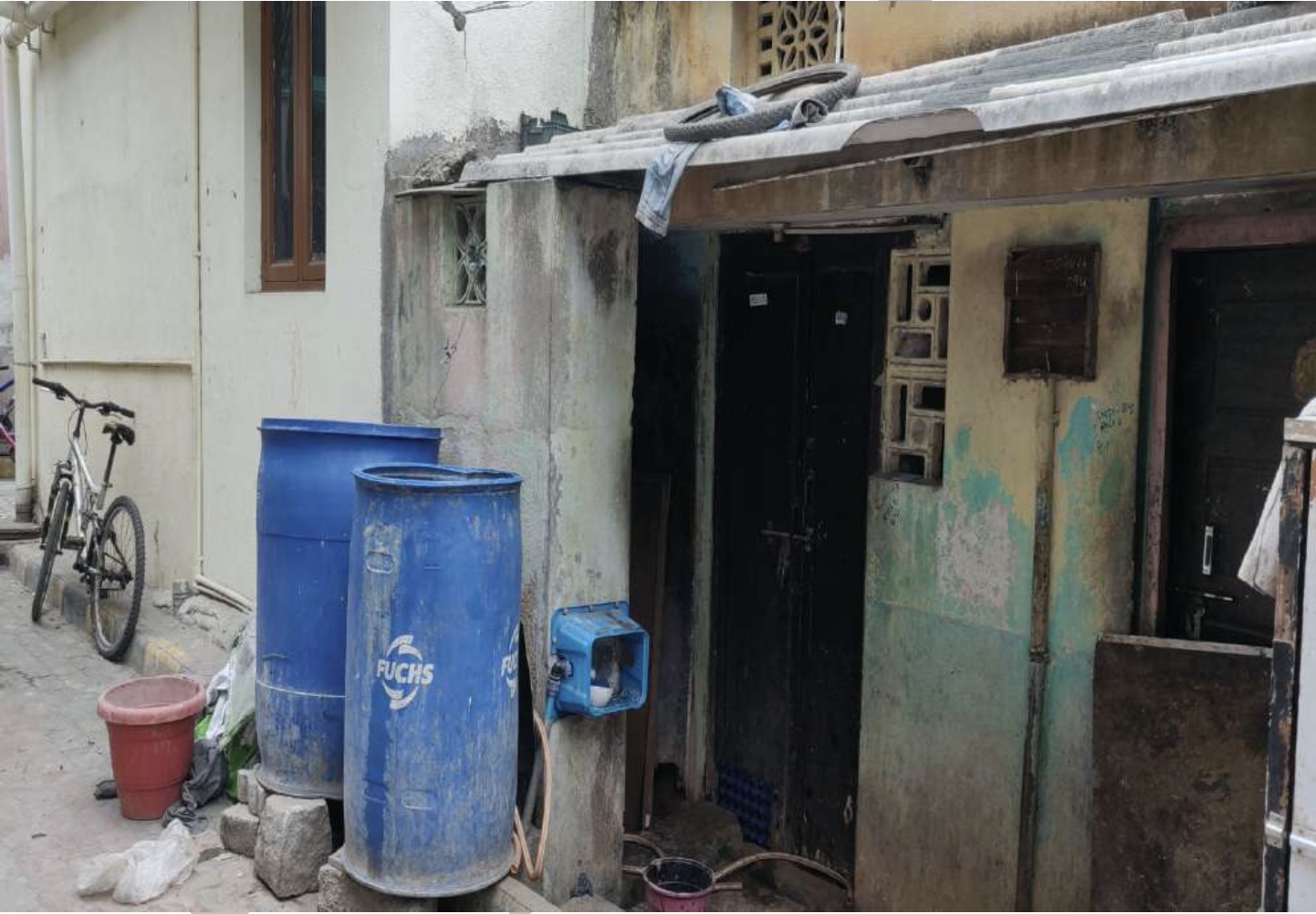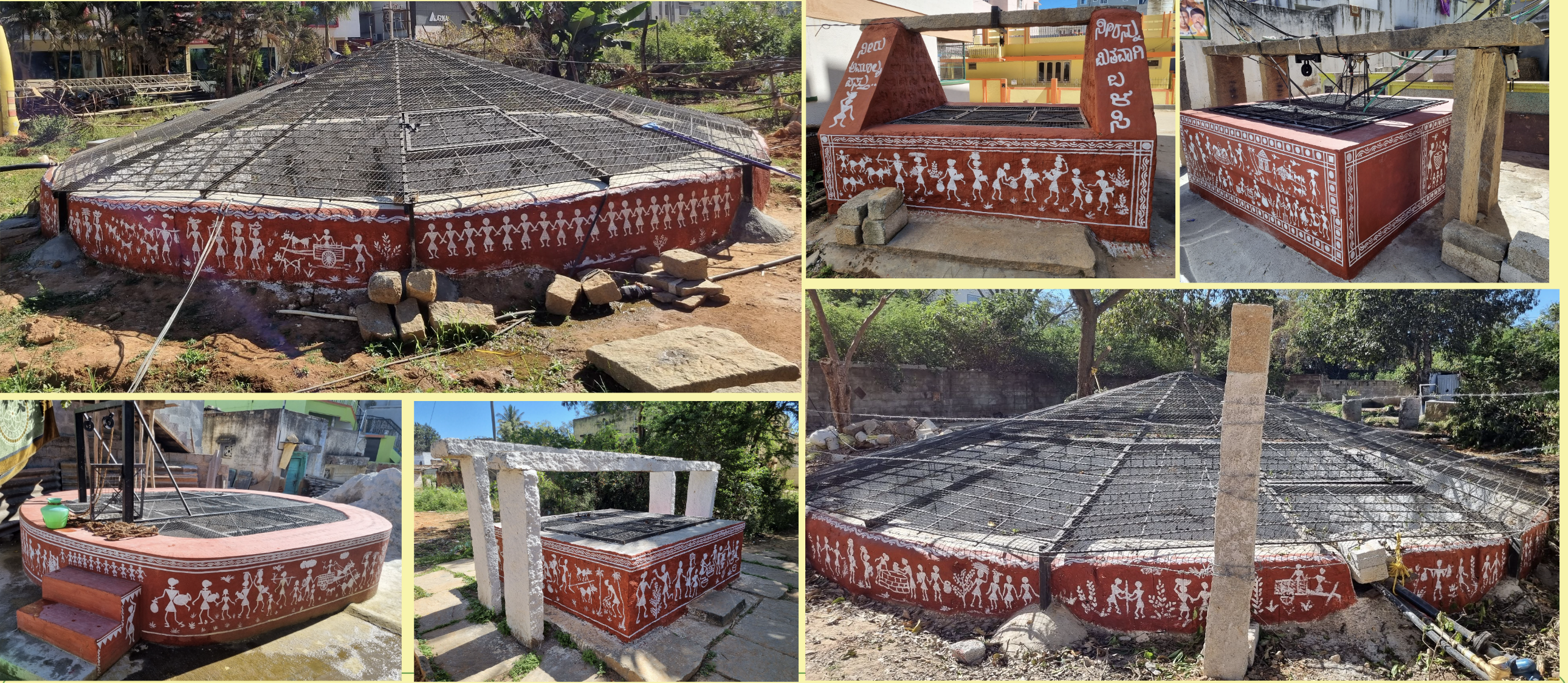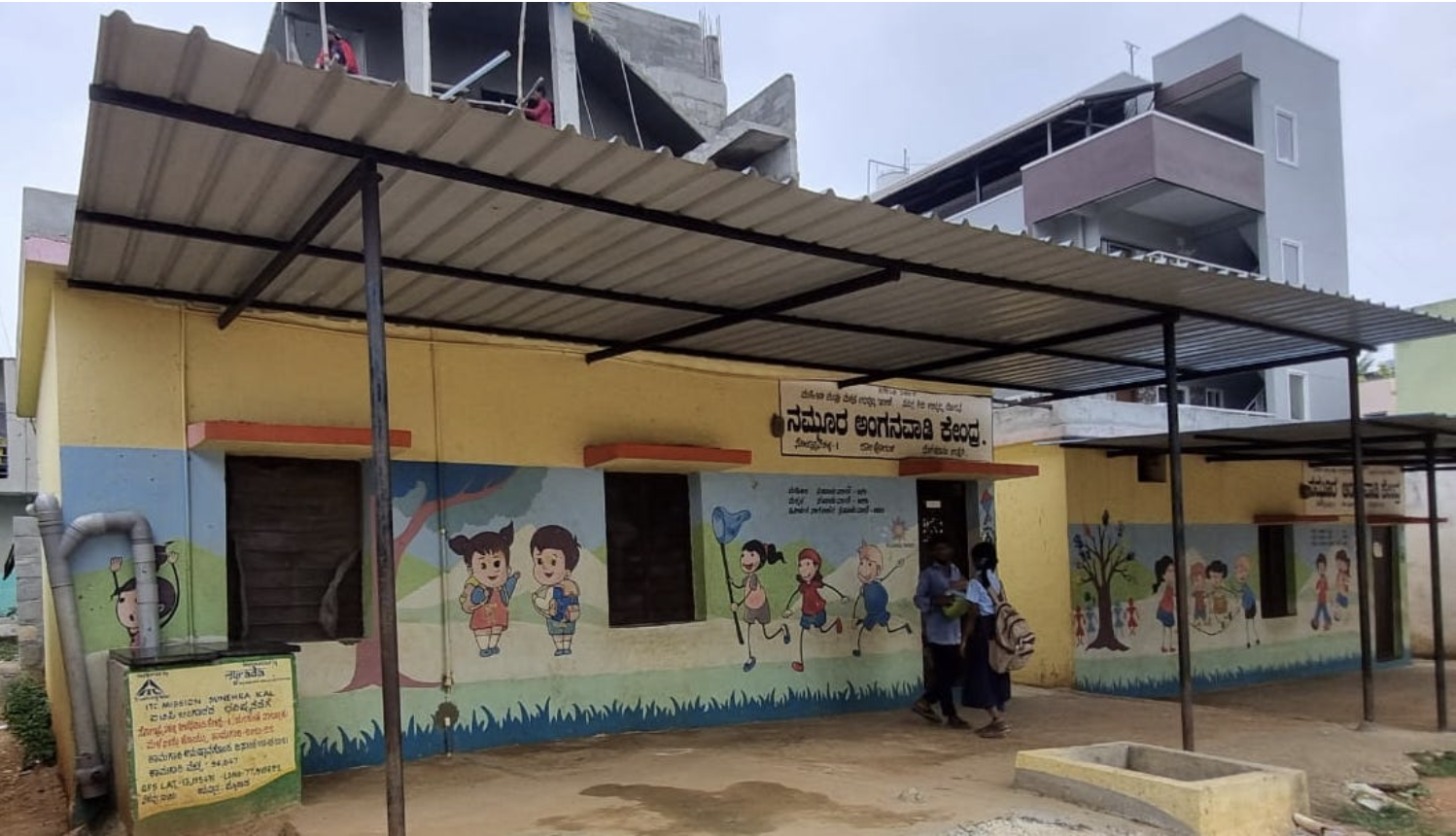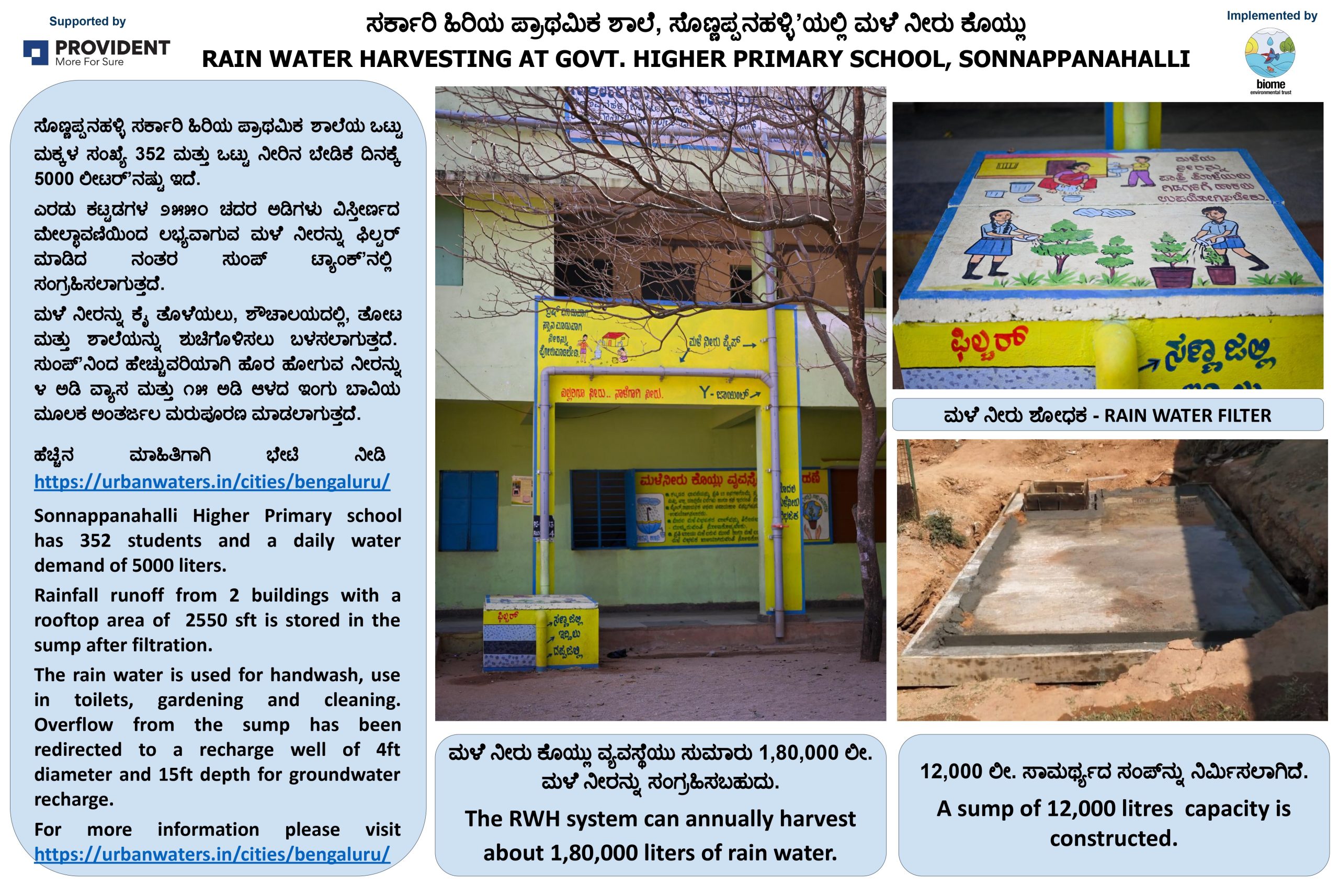Water management at Ferns Residency layout
Introduction
Ferns Residency is a residential layout in Kothanur in north-east Bangalore. It is 21 years old and is spread over 30 acres. It currently has 130 villas with 500 residents. This case study describes how layouts without a water connection from BWSSB (Bangalore Water Supply and Sewerage Board) can manage their water needs.
Water sources and demand
Ferns Residency meets its daily requirement of 160,000 litres of water from borewells, since they do not have a BWSSB connection. There are 7 borewells, whose yields declined from the time they were drilled, till they had to rely on a single borewell. The treated wastewater from the Sewage Treatment Plant (STP) is used mainly for watering the gardens in the common area and by a few villas.
The layout association does not buy water from tankers. But individual households may buy tanker water when there is a water shortage or extra need. The villas are metered but the borewells are not. The water demand in the layout is quite high – 300 litres per person per day (including gardening), which is almost double the recommended consumption of 150 litres per person per day.
Recharge wells and rainwater harvesting (RWH)
During the summer of 2016, the borewell water was not enough. Earlier there had also been some flooding of low lying areas during heavy rain. So, the residents’ association did the following:
- They got 25 recharge wells (each 3 ft wide and 12 ft deep) dug in the stormwater drains in the northern (lower) part of the layout. The recharge wells direct rainwater into the ground, replenishing the groundwater and also prevent flooding.
- Rooftop rainwater harvesting was implemented in the clubhouse. The rainwater collected goes to the common sump. About half the villas have also implemented rooftop RWH
In early 2019, the association got in touch with Biome Environmental Solutions to achieve water sustainability. Biome did the following:
- The layout had already got borewell camera inspections done. Biome studied the reports and found that 3 of the unused borewells had water and could be used again
- Biome suggested digging more recharge wells in the stormwater drains throughout the layout
- To start with, 3 pilot recharge wells of 3 ft diameter and 20 ft depth were dug in the stormwater drains to check how they worked in 3 different locations in the layout
- Recharge rate tests were done on these 3 pilot recharge wells as well as one of the old 12 ft recharge wells. Each well was filled with a known volume of water and the time taken for it to percolate fully was recorded. The average recharge rate was 80.6 litres per hour. This helped to understand the recharge rate of the shallow aquifer of Ferns Residency. The tests showed that the deeper pilot wells had better recharge rates than the old shallow well
- Based on the recharge rate tests, Biome suggested that the depth of all the wells should be 25 feet. 26 new recharge wells were dug, each 3 ft x 25 ft, and 9 of the existing recharge wells were deepened from 12 ft to 25 ft. In 2021, 26 additional recharge wells of 3 ft x 25 ft were dug, and 13 of the old wells were deepened to 25 ft
- Biome also suggested that the FR association could administer an ‘increasing block tariff’ instead of a flat rate to the residents in order to reduce the demand for water. The ‘increasing block tariff’ encourages water conservation and judicious water use, as the tariff increases as higher volumes of water are used

Water situation after intervention
After digging the recharge wells, the association found they could pump water from the borewell all year round without any decline in its yield, just as they could in the monsoon. Recharge wells appropriately located replenish the groundwater with good rainfall over a period of time, helping to increase the borewell yield.
According to the manager Mr. Ravi, “After digging recharge wells and implementing rainwater harvesting we have not faced any water shortage. I recommend that every layout, apartment and individual household implement RWH.”


